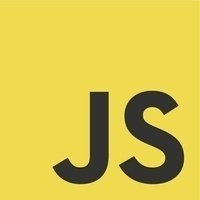Need advice about which tool to choose?Ask the StackShare community!
Apache Maven vs Bazel vs Buck: What are the differences?
Introduction
Apache Maven, Bazel, and Buck are build automation tools commonly used in software development. Each of these tools has its own features and characteristics that set them apart from one another. In this article, we will highlight the key differences between Apache Maven, Bazel, and Buck.
Dependency Management: Apache Maven is known for its robust dependency management system. It uses a declarative XML-based approach to define dependencies, making it easier to manage libraries and their versions. Bazel, on the other hand, uses a powerful and flexible dependency graph to manage dependencies. It allows for fine-grained control over dependencies and supports multiple dependency types, including remote repositories, local files, and external targets. Buck also provides dependency management, but it relies on an explicit build configuration file to define dependencies.
Build Performance: Bazel and Buck are specifically designed to be fast and efficient in performance. Bazel utilizes a distributed caching system and builds incrementally, allowing for faster build times when building large-scale projects. Buck also leverages incremental builds and a caching mechanism to improve build performance. Apache Maven, while still widely used, may not be as fast as Bazel and Buck when it comes to the speed of dependency resolution and build execution.
Language and Platform Support: Apache Maven is primarily focused on Java projects and is widely adopted within the Java community. It has extensive support for Java libraries and frameworks. Bazel, on the other hand, supports multiple programming languages including Java, C++, Python, and more. It is commonly used in large-scale, multi-language projects. Buck also supports multiple programming languages, including Java, C++, and Android development. It provides rules and toolchains for building Android applications efficiently.
Build Configuration: Apache Maven relies on a convention-over-configuration approach where a predefined directory structure and naming conventions are followed to configure the build process. Bazel, on the other hand, uses BUILD files to specify build targets and dependencies, allowing for more fine-grained control over the build process. Buck also uses a build file format to define build targets and their dependencies, providing flexibility and control over the build configuration.
Scalability: Bazel and Buck are known for their scalability and ability to handle large codebases efficiently. Bazel's distributed caching system and build incrementality make it suitable for massive codebases with incremental builds. Buck also supports large-scale projects and provides features such as faster incremental builds and targeted builds. Apache Maven, while scalable, may encounter performance issues with very large projects due to its dependency resolution mechanism.
Ecosystem and Community: Apache Maven has a mature and extensive ecosystem, with a wide range of plugins and integrations available for various build and development tasks. It also has a large user community and extensive documentation. Bazel and Buck, although less mainstream, have an active and growing community. However, their ecosystems and plugin availability might not be as extensive as Maven.
In summary, Apache Maven excels in dependency management and has a well-established ecosystem for Java projects. Bazel and Buck, on the other hand, offer better build performance, support for multiple languages, fine-grained build configuration, scalability, and growing communities. The choice of build automation tool depends on the specific needs and requirements of the project.
Pros of Bazel
- Fast28
- Deterministic incremental builds20
- Correct17
- Multi-language16
- Enforces declared inputs/outputs14
- High-level build language10
- Scalable9
- Multi-platform support5
- Sandboxing5
- Dependency management4
- Windows Support2
- Flexible2
- Android Studio integration1
Pros of Buck
- Fast4
- Java1
- 1
- Runs on OSX1
- Windows Support1
Pros of Apache Maven
- Dependency management138
- Necessary evil70
- I’d rather code my app, not my build60
- Publishing packaged artifacts48
- Convention over configuration43
- Modularisation18
- Consistency across builds11
- Prevents overengineering using scripting6
- Runs Tests4
- Lot of cool plugins4
- Extensible3
- Hard to customize2
- Runs on Linux2
- Runs on OS X1
- Slow incremental build1
- Inconsistent buillds1
- Undeterminisc1
- Good IDE tooling1
Sign up to add or upvote prosMake informed product decisions
Cons of Bazel
- No Windows Support3
- Bad IntelliJ support2
- Poor windows support for some languages1
- Constant breaking changes1
- Learning Curve1
- Lack of Documentation1
Cons of Buck
- Lack of Documentation2
- Learning Curve1
Cons of Apache Maven
- Complex6
- Inconsistent buillds1
- Not many plugin-alternatives0









































